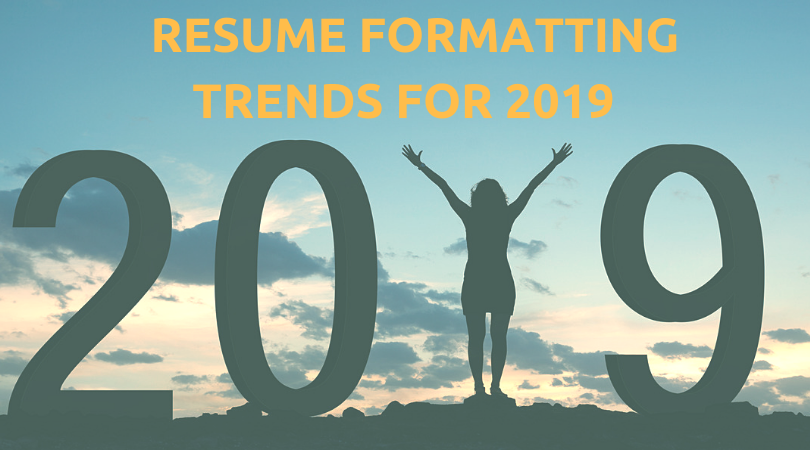In our previous article, we’ve summarised some expert-approved resume tips for 2019 such as ditching the resume objective in favour of a personal statement, and optimising you resume with keywords to make it friendly for resume scanning machines.
In this post, we’ll provide you with additional formatting points to refer to while crafting a shiny, new resume for 2019. From resume file names, to colours – it’s time to upgrade it all for 2019.
RESUME FILE NAME CONVENTION
Avoid naming your resume resume.doc.There will be no way to distinguish it from all other resumes having the same file name. Instead, use your name as the file name. This way, hiring managers will know whose resume it is, and it will be easier for them to track and manage it.
You might also choose to provide a bit more detail in the title than simply your name. Include the title of the position in your document name. You can use spaces or dashes between words. Capitalising words may also help make the document name easier to read.
If you’re applying for jobs very often, it’s possible that you have several version of your resume saved on your computer. Don’t include the version numbers in your file name. Hiring managers might get the impression that the job is halfway down a long list of potential opportunities. Instead, add the month and year when you last updated your resume to show that you have just recently updated it.
Below are examples of good filenames for your resume:
- DOE, JOHN Resume – Account Manager – January 2019.doc
- John Doe Resume, Account Manager, January 2019.doc
RESUME COLOUR
There’s always a chance a hiring manager will appreciate creativity and the unique element of colour on your resume. There’s a possibility that adding colour into your resume will help you ‘stand out from the crowd.’
Light colours (such as grey, light blue, and pale beige) when use sparingly throughout a resume, can help highlight specific areas of information. It can also be used to break up different sections of the resume.
The use of bright colours (such as dark blue, red, orange, and green), on the other hand, is regarded as unprofessional. They can be distracting and may take the focus away from the content of your resume.
Using black, white, and a third light colour is a safe resume colour scheme. Make one colour dominant, one secondary, and use the third to place emphasis. An example is to use white as your background, black for the text, and the remaining light colour to highlight important parts.
It’s a good idea, if possible, to use the same colours across all your application documents, such as cover letter and selection criteria.
MAKE YOUR HYPERLINKS LIVE
Typically, hyperlinks you can include on your resume are as follows:
- LinkedIn profile in the contact information at the top
- Personal website in the contact information, in case you have one
- Email address
- Portfolio or sample works
- Websites of the companies you’ve worked for in the past
By including hyperlinks, you’re showing that you have a modern resume for 2019 and are up on basic technology. It makes the task easier for hiring managers to contact you. It also helps them get to know you better than the relatively little information they can get from your resume.
On a side note: even though most resumes are now sent digitally or are uploaded into an application site, occasionally they are still submitted in printed format. It’s always a good idea to keep a version of your resume that has the hyperlinks typed out for those few occasions you’ll actually print it out.
MAKE YOUR RESUME EASY TO SKIM
Hiring managers only spend a maximum of 6 seconds before deciding if the applicant is a good fit for the position. Therefore, it’s important fo make it as easy as possible for the reader to skim your resume.
With this in mind, below are some techniques you can try to make your resume super easy for hiring managers to skim through and navigate:
- Write your numbers as digits to make information such as numerical achievements easy to spot (example: 80%, $800K, 80+ staff, <8 days)
- Have a separate section that lists out all your skills in their entity. Avoid mentioning skills in the same section of the resume that describes the job (i.e. your work experience section)
- Use short bullet points (1-2 lines). More than 2 lines will make your resume difficult to understand
- Align your employment dates to the right. If a recruiter wants to see if you have any work gaps, all they need to do is to look over to the right and all the dates will be lined up as clear as day
Click here for more job search tips and advice.
For more ideas on how to craft winning resume, visit www.rev-upyourresume.com.au or connect with us through LinkedIn, Twitter, and Facebook.

